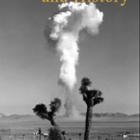Brown, Karen. “The Conservation and Utilisation of the Natural World: Silviculture in the Cape Colony, c. 1902–1910.” Environment and History 7, no. 4 (Nov., 2001): 427–47. doi:10.3197/096734001129342540. The period between the culmination of the South African War in May 1902 and the Union of South Africa eight years later witnessed a significant phase in the development of the Cape’s Forestry Department. The Colony’s scientific foresters articulated a rhetoric of crisis, based on the assumption that global timber supplies were almost exhausted, in order to encourage politicians to take action to forestall an impending disaster. After the War, the conservation and extension of the country’s dwindling woodlands was promoted as a key political issue by Jameson’s Progressive Party, which held office from February 1904 to February 1908. The organisation of the Forest Department and the work it performed became the subject of government investigations in an endeavour to achieve silvatic self-sufficiency through the application of more systematic and scientific land management procedures. As a consequence, the Department was centralised under the Chief Conservator of Forests and nationally based conservation programmes, based on German precedents, were put into place. Protecting the trees and encouraging sustainability of yield involved the imposition of restrictions on felling and access to woodlands. This paper explores the ideology of forest conservation and the evolution of silviculture in the post bellum Cape, as well as the socio-economic impact of these policies, focusing in particular on African populations residing in the Eastern Cape and the impoverished woodcutters from the Knysna Forests. All rights reserved. © 2001 The White Horse Press
"The Conservation and Utilisation of the Natural World: Silviculture in the Cape Colony, c. 1902–1910"
Brown, Karen | from Multimedia Library Collection:
Environment and History (journal)


